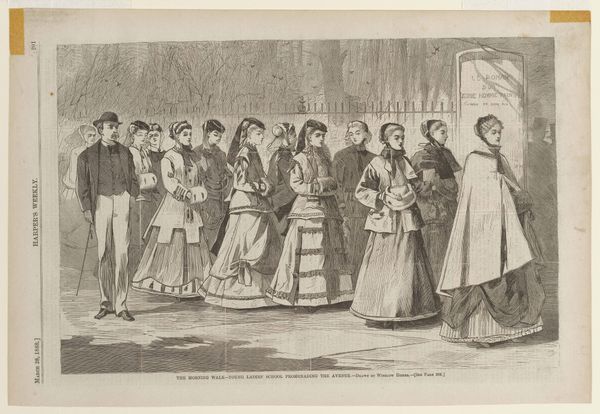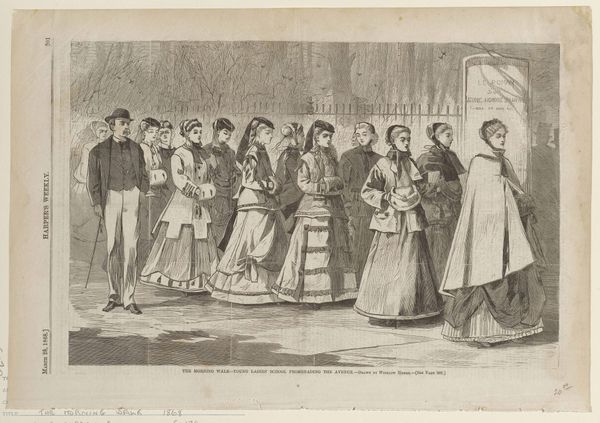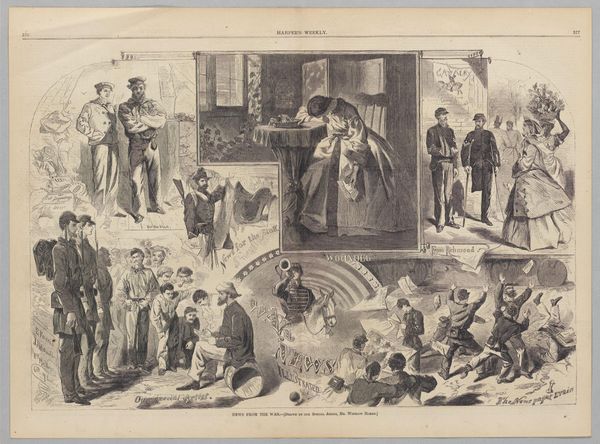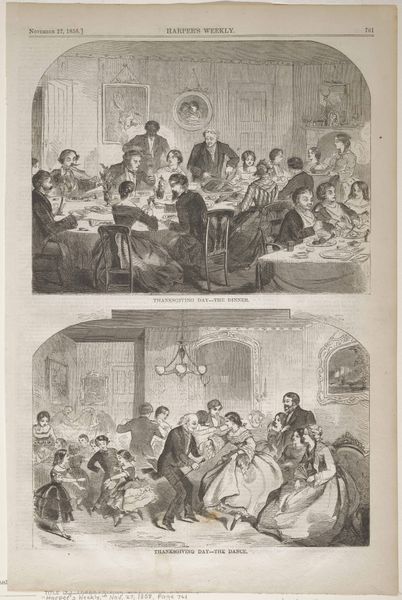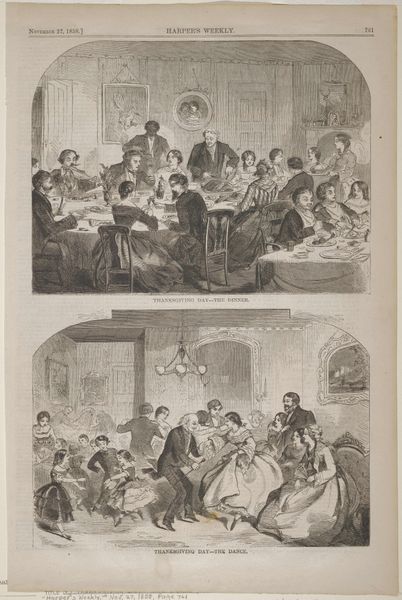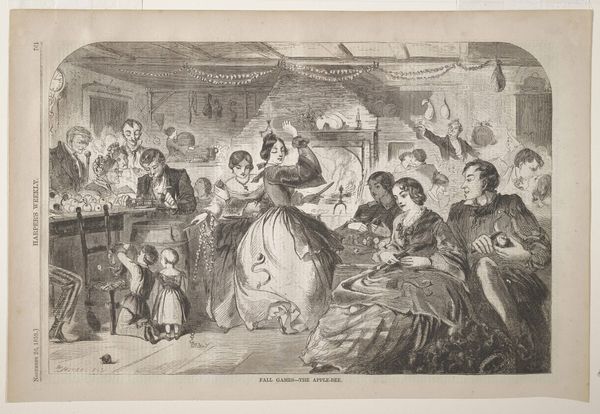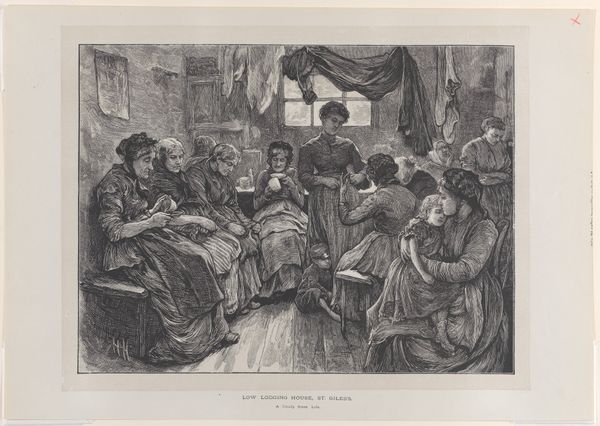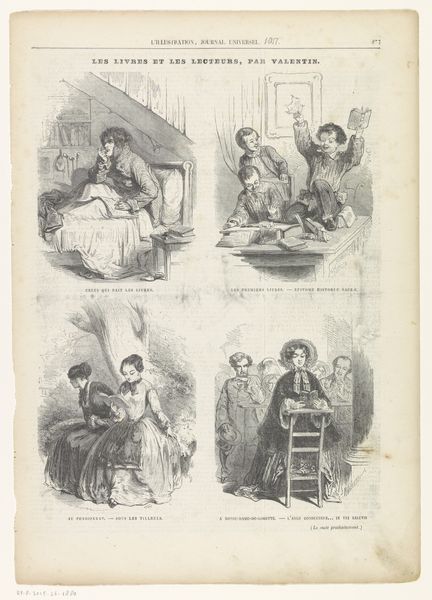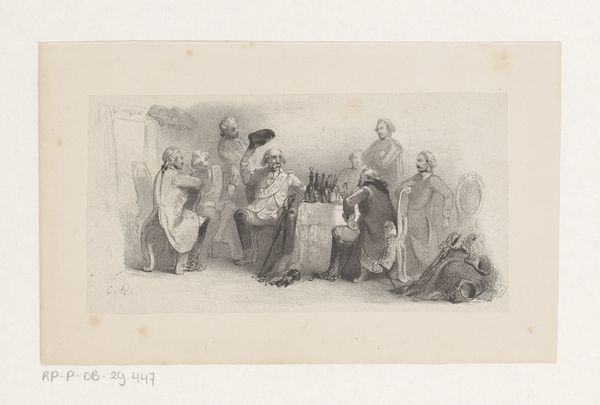
drawing, print, paper, woodcut, pen, wood-engraving
#
portrait
#
drawing
#
narrative-art
# print
#
paper
#
woodcut
#
pen
#
portrait drawing
#
genre-painting
#
academic-art
#
wood-engraving
Dimensions: 9 1/16 x 13 7/16 in. (23.0 x 34.1 cm)
Copyright: Public Domain
Curator: We’re looking at "New York Charities - St. Barnabas House," an 1874 wood engraving by Winslow Homer. Editor: It strikes me immediately as… muted. There’s a quiet solemnity in the arrangement of figures, all these women and children, rendered in almost ghostly monochrome. A sense of enforced order, perhaps? Curator: It’s interesting you pick up on that quiet. This piece, published in *Harper’s Weekly*, depicts a scene inside St. Barnabas House, a charitable institution. Consider the process of its creation: from observation, likely sketches, to translation into a drawing, and finally, the meticulous work of a wood engraver rendering it for mass reproduction. Editor: Mass reproduction… yes, that's crucial. Homer's hand is mediated, quite literally, by the engraver's tools and labor. What does that distance—the mediation of industry—do to the intimacy of the scene it depicts? Are we meant to feel like voyeurs or responsible citizens, or simply consumers of news? Curator: Perhaps both? Genre painting in print allows Homer to address social issues on a broad scale, but consider his decision to foreground women and children—often the most vulnerable to economic hardship. Editor: It reads as careful yet ambiguous. The eye is drawn to the different groupings of people. Each vignette invites questions about their lives, their stories... Are they seeking assistance, working, learning? And look closely at their clothing, subtly revealing different economic circumstances, playing into notions of charity and worthiness. It underscores the mechanics of assistance – who deserves help, how it’s given, who provides it – while shrouding individual narratives. Curator: I agree, there's a feeling of suspended narrative. It invites us to project ourselves into their world and reflect on the larger societal conditions that make such an institution necessary. I can feel my perception changed looking into their portraits. Editor: Indeed, that stark reality, filtered through Homer’s artistry and the printing press, forces us to consider not just the subject, but also the very machinery that brings this image, this vision of reality, into our hands. It’s both a work of art and a manufactured document. Curator: I appreciate your seeing and pointing that out to me; it helps highlight how intertwined labor, class, and representation can be, even in a seemingly straightforward image. Editor: And I walk away questioning what changes, and what sadly persists.
Comments
No comments
Be the first to comment and join the conversation on the ultimate creative platform.



